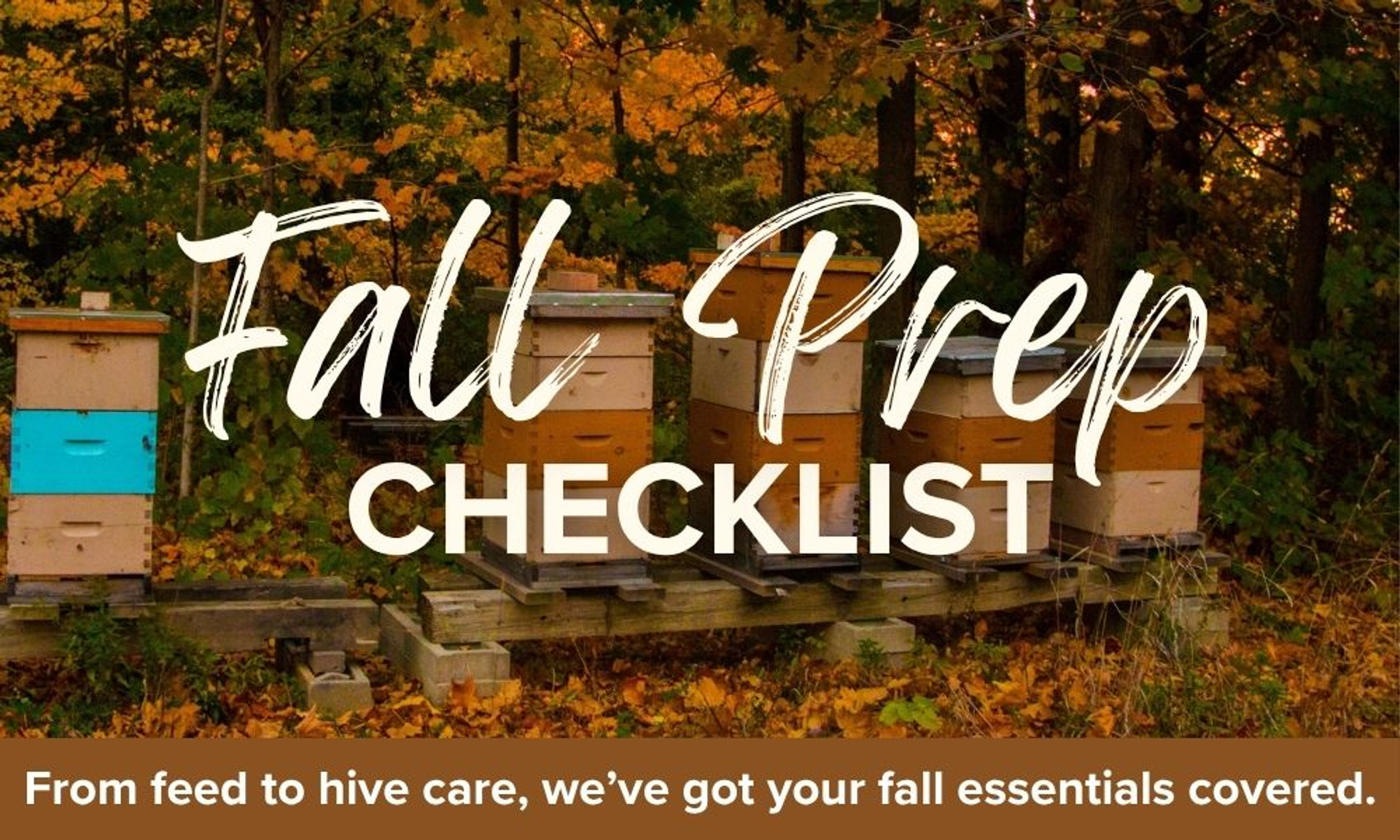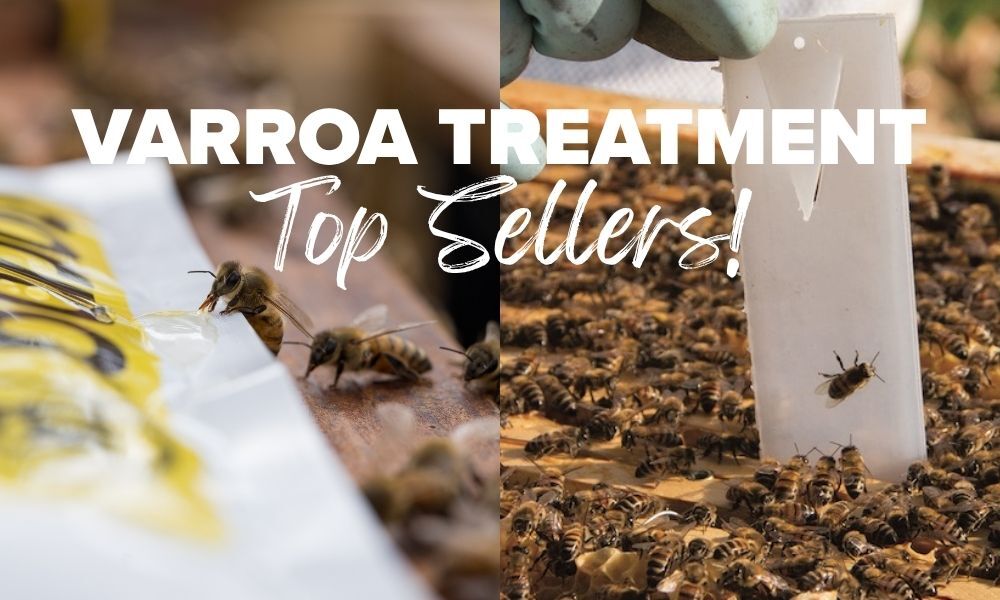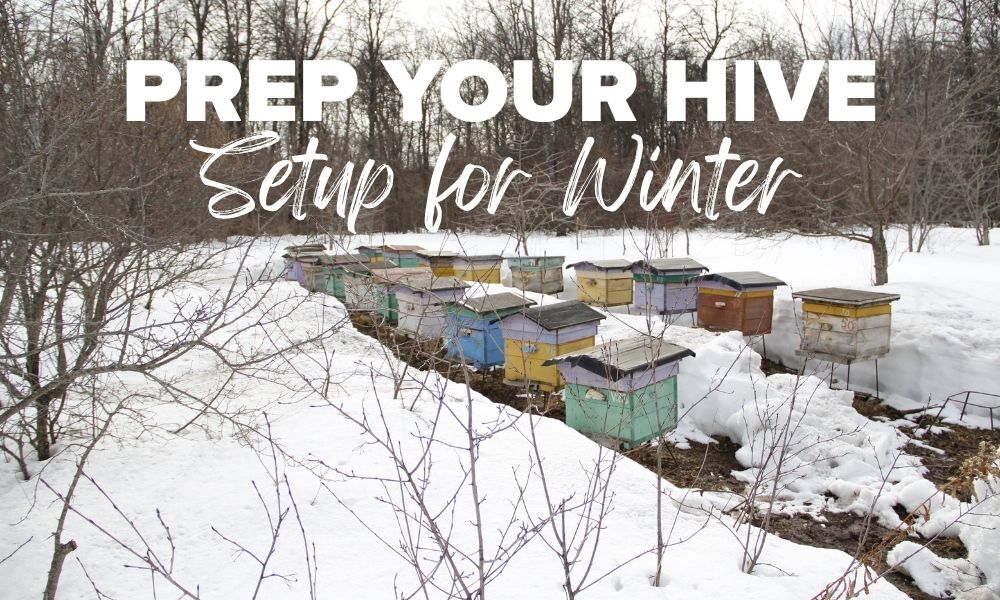Fall Beekeeping Checklist: Setting Your Colonies Up for Winter Success
As summer winds down, it’s tempting to focus on enjoying the final warm days and wrapping up your honey harvest. But for beekeepers, fall is the most important time to prepare for winter—especially in northern climates. Colonies that aren’t healthy and well-prepared by early fall are far less likely to survive the cold months ahead.
Use this fall beekeeping checklist to ensure your hives are strong, healthy, and ready to overwinter successfully.
1. Evaluate Your Queen, Brood Pattern & Colony Strength
Why it matters:
A strong, productive queen lays the foundation for healthy winter bees. Colonies with poor brood patterns or dwindling populations are much less likely to make it through the winter.
How to check:
Inspect each hive’s brood pattern. It should be solid and consistent, with few empty cells. Look for active egg-laying and larvae. Pay attention to any hives with weak population numbers.
Action steps:
- Requeen weak or failing colonies while there’s still time—late August is often the last window in most temperate climates.
- Consider combining small, underperforming colonies with stronger ones to improve overall survival odds.
2. Monitor and Treat for Varroa Mites—Early!
Why it matters:
Varroa mites are the #1 threat to honey bee health. Mite populations usually peak in late summer, weakening bees and spreading deadly viruses that compromise winter survival.
How to monitor:
Use an alcohol wash or sugar roll method to get accurate mite counts.
Action steps:
- If mite levels exceed 2–3%, treat your hives immediately.
- Choose treatments based on your climate and hive conditions. Options include Norroa, formic acid, oxalic acid, or Apivar. Always follow product instructions and check temperature guidelines for effectiveness and safety.
3. Make Sure Your Bees Have Enough Food for Winter
Why it matters:
Bees need 60–90 pounds of stored honey—depending on your location—to survive the winter months.
How to check:
Weigh the hive or visually inspect for capped honey. A healthy 10-frame deep box should have at least 6–8 frames of honey.
Action steps:
- If food stores are low, start feeding 2:1 sugar syrup in late August or early September.
- Consider offering a pollen substitute to support late-season brood rearing and build a strong population of winter bees.
4. Store Extra Boxes and Frames the Right Way
Why it matters:
Empty boxes and frames can attract wax moths, small hive beetles, and mold if not properly stored.
How to store equipment:
- Freeze frames and boxes for 48–72 hours to kill pests and eggs. Let them return to room temperature to prevent condensation.
- Store in a dry, well-ventilated area.
Action steps:
- Use repellents like Paramoth crystals to help deter wax moths.
- Keep stacked boxes loosely covered to allow air circulation.
5. Prep Your Hive Setup for Winter
Why it matters:
Cold weather doesn’t kill bees—moisture does. Proper insulation and ventilation are key to overwintering success.
How to prepare:
Inspect hive equipment for cracks or damage and repair or replace as needed.
Action steps:
- Add mouse guards and reduce entrances to keep rodents out.
- Install moisture boards or inner covers to control condensation buildup.
- In colder regions, wrap hives once daytime temperatures consistently drop below 45°F.
Final Thoughts: Give Your Bees the Best Chance This Winter
Late summer and early fall are your last opportunities to get your bees ready for winter. By taking proactive steps now—evaluating queens, managing varroa, checking food reserves, storing equipment properly, and setting up hives for cold weather—you’ll dramatically increase your colony’s chances of surviving and thriving into spring.
Need fall beekeeping supplies? Shop winter prep essentials now at Mann Lake »



